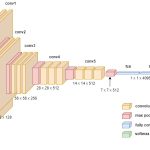Introduction
Artificial Neural Networks (ANNs) have revolutionized the fields of machine learning, artificial intelligence, and data science. But did you know that their architecture is inspired by the intricate workings of the human brain? 🧬 The way ANNs process information, learn, and make decisions is designed to emulate the brain’s neuronal structures and functions.
In this article, we will delve deep into how neural networks mimic the human brain, the parallels between biological and artificial neurons, and how this understanding enhances the development of more intelligent systems.
🧠 The Human Brain: Nature’s Most Complex Neural Network
The human brain is a fascinating, complex biological system comprising approximately 86 billion neurons. Each neuron is a specialized cell responsible for transmitting information through electrical and chemical signals.
Key Components of the Human Brain:
-
Neurons: Basic working units of the brain that transmit information.
-
Synapses: Connections between neurons where communication happens.
-
Neurotransmitters: Chemicals that carry messages across synapses.
-
Learning Mechanisms: The brain learns by strengthening or weakening synaptic connections, a concept known as neuroplasticity.
Brain’s Learning Process:
When you learn something new, certain pathways in your brain become more active and efficient over time. This adaptability allows the brain to evolve and optimize its responses to stimuli.
🤖 Artificial Neural Networks: The Digital Counterpart
Artificial Neural Networks (ANNs) are computational models inspired by the structure of the human brain. Their goal is to process information in a manner similar to human learning and decision-making.
Key Components of ANNs:
-
Artificial Neurons (Nodes): Modeled after biological neurons; they receive input, process it, and produce an output.
-
Weights: Numeric values that represent the strength of connections between neurons.
-
Activation Functions: Mathematical formulas that determine if a neuron should be activated.
-
Layers:
-
Input Layer: Receives data.
-
Hidden Layers: Intermediate layers that process data.
-
Output Layer: Provides the final result.
-
🔄 How ANNs Mimic the Brain’s Functionality
1. Neurons & Nodes:
Biological neurons and artificial nodes serve a similar role — processing and transmitting information. Both systems receive inputs, perform computations, and pass on outputs.
2. Synapses & Weights:
In the brain, synapses transmit signals between neurons, while in ANNs, weights determine the strength of the connection between nodes. Learning in both systems involves modifying these connections.
3. Signal Transmission & Forward Propagation:
The way neurons pass signals through synapses mirrors how ANNs use forward propagation to pass data from the input to output layers.
4. Learning & Backpropagation:
Just as the brain strengthens connections through experience, ANNs adjust their weights using backpropagation — an algorithm that reduces errors by refining weights based on the difference between predicted and actual outcomes.
5. Pattern Recognition & Generalization:
Both the brain and ANNs excel at recognizing patterns and generalizing from examples. For instance, after seeing several images of dogs, both systems can identify a new, unseen dog image.
⚙️ Advanced Concepts: How Deep Learning Brings Us Closer to Human Intelligence
Deep Learning, a subset of machine learning, uses deep neural networks with many hidden layers. These architectures allow machines to process complex data, such as images, speech, and language, at levels once thought to be exclusively human.
Examples include:
-
Convolutional Neural Networks (CNNs): Excel at visual tasks.
-
Recurrent Neural Networks (RNNs): Designed to handle sequential data like speech and text.
Similarities in Learning:
| Human Brain | Artificial Neural Network |
|---|---|
| Strengthens synaptic connections | Adjusts weights |
| Learns from experience | Trained using datasets |
| Recognizes patterns | Recognizes patterns |
| Generalizes from examples | Generalizes from training data |
🚀 The Limitations and Ethical Considerations
Despite their impressive capabilities, neural networks have several limitations:
-
They require vast amounts of data to learn.
-
They lack true consciousness or understanding.
-
Ethical concerns arise regarding biases in data and decision-making processes.
These systems, while mimicking the brain, do not replicate consciousness, emotions, or ethical reasoning — crucial aspects of human intelligence.
🌟 Conclusion: The Brain & Neural Networks – Partners in Progress
Understanding how neural networks mimic the human brain not only helps us create better AI systems but also deepens our comprehension of our own cognitive processes. As AI continues to advance, the interplay between neuroscience and artificial intelligence will play a key role in pushing the boundaries of innovation.


